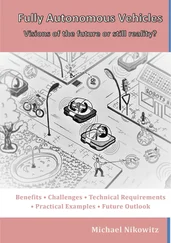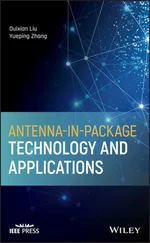44 42
45 43
46 44
47 45
48 47
49 48
50 49
51 50
52 51
53 52
54 53
55 54
56 55
57 56
58 57
59 58
60 59
61 60
62 61
63 62
64 63
65 64
66 65
67 66
68 67
69 68
70 69
71 70
72 71
73 72
74 73
75 74
76 75
77 77
78 78
79 79
80 80
81 81
82 82
83 83
84 84
85 85
86 86
87 87
88 88
89 89
90 90
91 91
92 92
93 93
94 94
95 95
96 96
97 97
98 98
99 99
100 100
101 101
102 102
103 103
104 104
105 105
106 106
107 107
108 108
109 109
110 110
111 111
112 112
113 113
114 114
115 115
116 116
117 117
118 118
119 119
120 120
121 121
122 122
123 123
124 124
125 125
126 126
127 127
128 128
129 129
130 130
131 131
132 132
133 133
134 134
135 135
136 136
137 137
138 138
139 139
140 140
141 141
142 142
143 143
144 144
145 145
146 146
147 147
148 148
149 149
150 150
151 151
152 152
153 153
154 154
155 155
156 158
157 156
158 157
159 159
160 160
161 161
162 162
163 163
164 164
165 165
166 166
167 167
168 168
169 169
170 170
171 171
172 172
173 173
174 174
175 175
176 176
177 177
178 178
179 179
180 180
181 181
182 183
183 184
184 185
185 186
186 187
187 188
188 189
189 190
190 191
191 192
192 193
193 194
194 195
195 196
196 197
197 199
198 200
199 201
200 202
201 203
202 204
Engineering Autonomous Vehicles and Robots
The DragonFly Modular-based Approach
Shaoshan Liu
PerceptIn
Fremont, CA
USA

This edition first published 2020
© 2020 John Wiley & Sons Ltd
All rights reserved. No part of this publication may be reproduced, stored in a retrieval system, or transmitted, in any form or by any means, electronic, mechanical, photocopying, recording or otherwise, except as permitted by law. Advice on how to obtain permission to reuse material from this title is available at http://www.wiley.com/go/permissions.
The right of Shaoshan Liu to be identified as the author of this work has been asserted in accordance with law.
Registered Offices
John Wiley & Sons, Inc., 111 River Street, Hoboken, NJ 07030, USA
John Wiley & Sons Ltd, The Atrium, Southern Gate, Chichester, West Sussex, PO19 8SQ, UK
Editorial Office
The Atrium, Southern Gate, Chichester, West Sussex, PO19 8SQ, UK
For details of our global editorial offices, customer services, and more information about Wiley products visit us at www.wiley.com.
Wiley also publishes its books in a variety of electronic formats and by print-on-demand. Some content that appears in standard print versions of this book may not be available in other formats.
Limit of Liability/Disclaimer of Warranty
While the publisher and authors have used their best efforts in preparing this work, they make no representations or warranties with respect to the accuracy or completeness of the contents of this work and specifically disclaim all warranties, including without limitation any implied warranties of merchantability or fitness for a particular purpose. No warranty may be created or extended by sales representatives, written sales materials or promotional statements for this work. The fact that an organization, website, or product is referred to in this work as a citation and/or potential source of further information does not mean that the publisher and authors endorse the information or services the organization, website, or product may provide or recommendations it may make. This work is sold with the understanding that the publisher is not engaged in rendering professional services. The advice and strategies contained herein may not be suitable for your situation. You should consult with a specialist where appropriate. Further, readers should be aware that websites listed in this work may have changed or disappeared between when this work was written and when it is read. Neither the publisher nor authors shall be liable for any loss of profit or any other commercial damages, including but not limited to special, incidental, consequential, or other damages.
Library of Congress Cataloging-in-Publication Data
Names: Liu, Shaoshan, author.
Title: Engineering autonomous vehicles and robots : the DragonFly modular-based approach / Shaoshan Liu.
Description: First edition. | Hoboken : Wiley-IEEE Press, 2020. | Includes bibliographical references and index.
Identifiers: LCCN 2019058288 (print) | LCCN 2019058289 (ebook) | ISBN 9781119570561 (hardback) | ISBN 9781119570554 (adobe pdf) | ISBN 9781119570547 (epub)
Subjects: LCSH: Automated vehicles. | Mobile robots.
Classification: LCC TL152.8 .L585 2020 (print) | LCC TL152.8 (ebook) | DDC 629.04/6–dc23
LC record available at https://lccn.loc.gov/2019058288
LC ebook record available at https://lccn.loc.gov/2019058289
Cover Design: Wiley
Cover Images: Courtesy of Shaoshan Liu; Background © Chainarong Prasertthai/Getty Images
1 Affordable and Reliable Autonomous Driving Through Modular Design
1.1 Introduction
In recent years, autonomous driving has become quite a popular topic in the research community as well as in industry, and even in the press, but besides the fact that it is exciting and revolutionary, why should we deploy autonomous vehicles? One reason is that ridesharing using clean-energy autonomous vehicles will completely revolutionize the transportation industry by reducing pollution and traffic problems, by improving safety, and by making our economy more efficient.
More specifically and starting with pollution reduction: there are about 260 million cars in the US today. If we were to convert all cars to clean-energy cars, we would reduce annual carbon emissions by 800 million tons, which would account for 13.3% of the US commitment to the Paris Agreement [1]. Also, with near-perfect scheduling, if ridesharing autonomous vehicles could be deployed, the number of cars could be reduced by 75% [2]. Consequently, these two changes combined have the potential to yield an annual reduction of 1 billion tons in carbon emission, an amount roughly equivalent to 20% of the US Commitment to the Paris Agreement.
As for safety improvement, human drivers have a crash rate of 4.2 accidents per million miles (PMM), while the current autonomous vehicle crash rate is 3.2 crashes PMM [3]. Yet, as the safety of autonomous vehicles continues to improve, if the autonomous vehicle crash rate PMM can be made to drop below 1, a whopping 30 000 lives could be saved annually in the US alone [4].
Lastly, consider the impact on the economy. Each ton of carbon emission has around a $220 impact on the US GDP. This means that $220 B could be saved annually by converting all vehicles to ride-sharing clean-energy autonomous vehicles [5]. Also, since the average cost per crash is about $30 000 in the US, by dropping the autonomous vehicle crash rate PMM to below 1, we could achieve another annual cost reduction of $300 B [6]. Therefore, in the US alone, the universal adoption of ride-sharing clean-energy autonomous vehicles could save as much as $520 B annually, which almost ties with the GDP of Sweden, one of the world's largest economies.
Читать дальше












